10 Ways to Reduce Costs and Boost Productivity with TIG Welders
Contents
TIG Welding is a cost-effective manufacturing process. However, several factors can significantly increase or reduce the cost-effectiveness and productivity of a welding project. These range from operational efficiency to the use of consumables.
In this article, we’ll go through 10 ways to significantly reduce welding costs and boost the productivity of welding projects.
1. Avoid Overwelding with TIG Welders
Overwelding occurs when a weld is larger than it needs to be. This is a common occurrence in the welding industry, especially with inexperienced welders. An overweld may result when there is no specified size in a design, when there is no fillet gauge, or when a big weld is created just to play it safe.
Overwelding is a significant resource drain; it uses more arc time, labor, shielding gas, and filler metal, which leads to higher costs. To put this waste into perspective, consider a 1/4″ overweld instead of a required 3/16″ weld: This results in a 78% increase in both weld metal deposition and arc-on time. This goes up to 177% when the overweld is 5/16″.
Increased cost and time are not the only negative implications of overwelding. Bigger-than-required welds tend to distort more because of the increased heat input. Also, excessive convexity may increase the likelihood of a weld failing due to fatigue. In groove joints, excessive reinforcements do not create stronger welds compared to welds that are flush (or just above) the base material surface.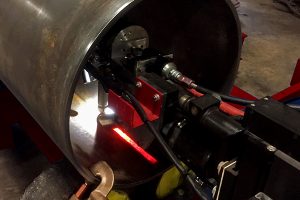
To save resources and time, stick to weld specifications in designs, make use of a fillet weld gauge, and avoid excessive reinforcements on groove joints. A change in wire diameter may also be used to avoid overwelding.
2. Employ Weld Automation
Weld automation is the use of equipment that automates part or all of the welding process. Human operators, no matter how skilled, are susceptible to fatigue. They can also make errors during welding or other related activities (e.g., positioning and handling pieces of the weldment). These factors, coupled with safety concerns, can affect the productivity of welding.
There are numerous types of automation equipment that can greatly increase productivity and save cost. However, different levels of automation can be applied in welding, and the term automation doesn’t necessarily mean robotic welding. For example, hard automation is the use of weld positioners, manipulators, and turning rolls to keep a weldment in place. There are also fully automated setups in which the actual welding is carried out by robotic arms—this is known as robotic welding.
The use of automation makes welding safer, faster, more productive, and more cost-effective. Compared to humans, machines are quicker, more consistent, and less prone to errors. Machines are also easily programmable, thus reducing the cost of hiring, managing, and training human workers.
3. Use the Right Welding Process
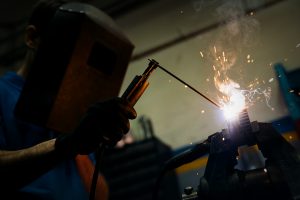
Weld aesthetics To effectively boost productivity, it is important to review all these factors before selecting a welding technique. For example, welding is more precise than metal inert gas (MIG) welding but requires more skill. If aesthetics is an important consideration, a TIG Welder should be used, as MIG would cause you to spend more time later on in finishing. There is no need to select the submerged arc welding (SAW) process, with its high deposition rate of, when your project only requires the 5 lb/hr deposition rate of stick welding.
To make sure that you are not consuming more resources than necessary you need to review all considerations. Also, selecting the wrong process may lead to the production of rejects.
4. Handle and Arrange Materials Properly
The proper handling of materials during welding is crucial to improving productivity. Valuable time is wasted when a welder has to stop a welding process, go somewhere else to look for (and procure) a needed welding accessory, return to the welding spot, and resume welding. Even more time is wasted when weldment pieces are scattered around the welding area. While these short interruptions may seem trivial, they add up to significant time-related costs.
Before welding begins, all consumables, welding accessories, and parts to be welded should be sorted out and arranged in proximity to the welder.
5. Properly Maintain All Welding Equipment
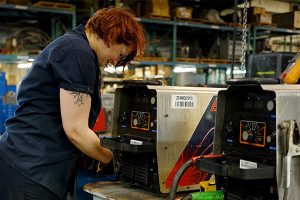
The importance of having equipment in excellent condition for productivity and cost savings can hardly be overemphasized, as faulty equipment may consume more resources while generating more waste. Frayed cables and faulty appliances can lead to voltage losses, wire feeding problems, and erratic arcs. Likewise, faulty gas systems can lead to gas leakage. All these contribute to the potential inefficiency of welding operations. There is also the problem of defective equipment producing poor-quality welds, which may lead to more rejects, compromised worker safety, and costly downtime. Investing in a comprehensive preventive maintenance program reduces costs in the long run.
6. Prepare Joints and Gaps Properly with TIG Welders
Adequate preparation of joints is required for a hitch-free welding process. To start, welding operators should carefully clean the surface of the base materials. This will help prevent contaminants, such as dirt and oil, from entering the weld puddle. Next, welding operators must ensure they have the right fit-up and no excessive gaps.
A poor fit-up can have numerous negative consequences. One example is the potential for distortion or burn-through, which compromises the strength of welds. Poor fit-up also leads to overwelding, as gaps increase the size of weld required to achieve the same load-bearing capacity. For example, a 1/4″ fillet is required for a joint when there is no gap. A gap of 1/8″ in that same joint would require a new fillet size of 3/8″ to achieve the same strength. That amounts to a 124% increase in filler metal consumption.
7. Control the Use of Consumables
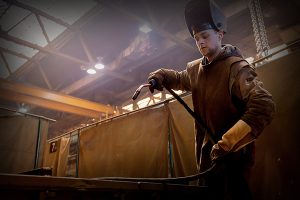
Consumables such as shielding gas, filler metals, anti-splatter compounds, grinding wheels, back bars, and gun components account for a noteworthy portion of the total welding cost. As a result, their proper use is important in keeping costs low. Certain consumables should only be used when necessary.
Gas delivery systems should be checked regularly so that leaks can be identified and sealed off. Surge turbines and surge guards can be attached to the end of welding guns to measure gas surge and reduce pressure, respectively.
8. Boost Efficiency
Labor cost is the largest cost variable in any welding project. One way to reduce this cost and boost welding productivity is by ensuring efficiency in all operations. The following operations are all time-dependent activities that can be optimized:
- Preparing the metal for welding
- Preparing the joint
- Assembling components
- Preheating, if required
- Tack welding components, if required
- Positioning/repositioning, if required
- Moving between welds
- Interpass cooling, if applicable
- Grinding spatter
- Inspecting and testing for
- Reworking/repairing of welds and subsequent
- Post-weld heat treating, if applicable
It is evident that a lapse in one operation can have a domino effect on the operations that follow it. For example, poorly prepared joints can lead to overwelding, which in turn can lead to avoidable grinding and polishing. Likewise, poor positioning may lead to reworking and repairing of welds.
While inefficiencies in operations may be difficult to track and measure, the rewards are worth the effort. An effective way to spot inefficiencies is as follows: If step 2 is a required process for step 3, then all is in order. However, if step 2 is carried out to correct or optimize step 1, then there are inefficiencies inherent in step 1.
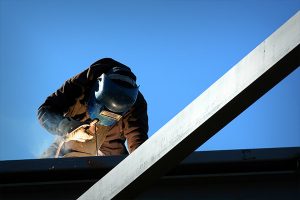
Another way of boosting productivity is by using technology that enhances efficiency. One of which is with cable length compensation (CLC™), adjust while welding (AWW™), Auto-Line, and SuitCase™ wire feeder which delivers smooth wire feeding with accurate, consistent speed. These boost productivity and reduce labor time and cost.
9. Minimize Rejects and Reworks
When a reject is produced, 100% of the filler material, shielding gas, electricity, labor, and time used is wasted. This is terrible for cost savings. Reworks also result in wasted time, resources, and labor. Ensure that through skill and efficiency, rejects and reworks are eliminated when using TIG welders.
10. Prioritize Welding Safety
While they do not directly contribute to welding costs, workplace accidents are never desirable nor do they contribute to the efficiency of any production environment. Worker safety should always be a top priority in any company, especially when working with TIG welders.
Ensure that you take all necessary precautions and follow the pertinent guidelines and regulations to maintain the safety of welding operators throughout a welding project. High-quality safety gear and comprehensive safety plans help to prevent injuries and save costs in the long run.



